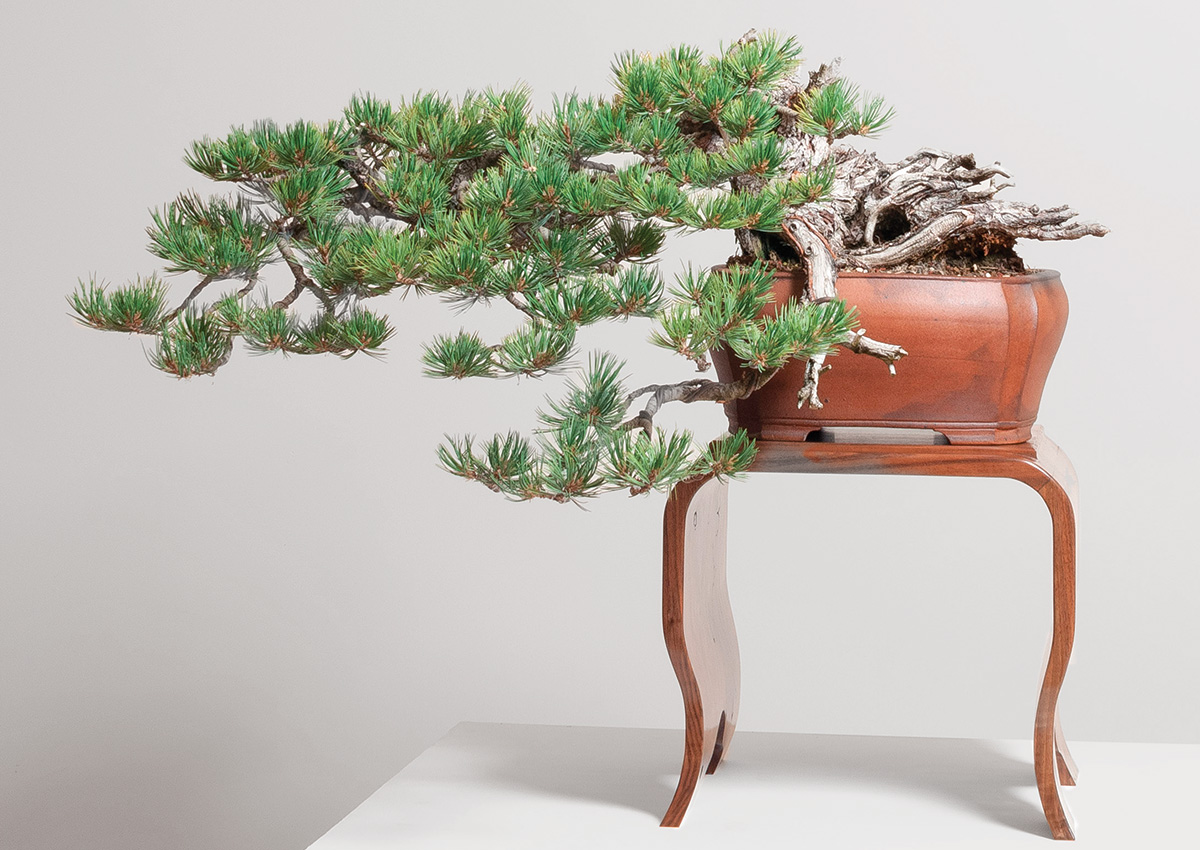Bonsai stands, inspired by nature
While the art of bonsai seeks to shape the tree in specific ways, Austin Heitzman shapes the stand that both supports the tree and complements its design.
Synopsis: Most woodworkers make furniture from trees; Austin Heitzman makes furniture for trees. Bonsai trees, to be exact. While the art of bonsai seeks to shape the tree in specific ways, Austin shapes the stand that both supports the tree and complements its design. Here, he explains the philosophy behind his work.
Woodworkers sometimes let the tree inspire their work; I produce work for trees, specifically tables and stands for bonsai.
Bonsai (pronounced bone-sigh) is the art of evoking the sublime in nature by carefully cultivating trees. These are regular tree species, kept compact by growing them in small pots and gradually trimming, bending, and carving them. The goal is to shape the tree to appear ancient and weathered, as if plucked from the wild. Any woody plant can be a bonsai, though some species take to it better than others.

It’s a complex and time-consuming art, and trees often take decades to reach a “finished” state. The National Bonsai Museum in Washington, D.C., has a tree from Japan that has been in its pot for almost 400 years. The origins of the art date back to 8th-century China, where it was called penjing. The Japanese adapted the idea, added their own style, and called it bonsai, meaning “tree in a tray.” Today the art is practiced around the world.

In order to survive, a bonsai tree must be grown outside year-round. They are brought indoors for just a few days at a time to be shown as art, traditionally on a stand or slab and accompanied by a small potted accent plant and sometimes a scroll. These other elements are selected to give a sense of where the tree is growing and what can be learned from its ancient experience. Top trees commonly fetch $30,000 to $50,000 in the United States, and up to $1 million in Japan.
I was first exposed to the art of bonsai—and handmade furniture—while growing up in Indonesia. When my wife and I moved to Portland, Ore., to pursue a career in craft, I found myself in the epicenter of America’s growing bonsai community, and decided to see if there was a market for unique, carefully designed stands. I have since carved out a niche for myself crafting display tables for bonsai enthusiasts and professionals around the world.
In formal Japanese display, the stand serves as a frame of sorts but isn’t considered part of the artistic tableau the way the tree, pot, and other accents are. For me and my clients, however, integrating the stand more fully into the tree’s story and landscape allows for a more interesting display.
How to draw inspiration from Asia

My earliest influences were American Colonial. The more I explored them, however, the more I discovered their roots in Europe and beyond, leading me out of my comfort zone. Bonsai stands have shown me how to mine Asian furniture for design elements, and encouraged me to use curves in my work.
Like many modern furniture designers, I’m not so much attempting to faithfully recreate a specific period piece as acting as a historical pillager, digesting as much inspiration as possible and using parts and pieces as I see fit. I encourage you to let your own influences wander. You will advance your craft, expand your creativity, and keep your practice fresh and new.
I begin any design with a series of quick sketches. I like to figure out shape and movement before getting too picky about proportions and scale. Also, I focus on just one or two central design elements, like a foot detail or skirt, and let those inform the rest of the design. Only after I’ve settled on the general look do I figure out the logistics. For the large hemlock below, I embedded metal brackets in the stand to help the miter joints withstand the extreme leverage of the 150-lb. tree. For three-way miters like those in the winter-hazel stand at left, I use a technique outlined in FWW #169, which delivers clean looks with modern production methods. For the limber pine stand, I did cove cuts on the tablesaw to remove waste from the inside curves, roughed out the outer curves with bevel cuts on the tablesaw, and then refined their shape with handplanes.

From Fine Woodworking #295
More like this
 |
Designer’s Notebook: The Passage of Time |
 |
Remembering a tree |
 |
Trees trained to grow into furniture |
Fine Woodworking Recommended Products

Circle Guide

Compass

Dividers



























Log in or create an account to post a comment.
Sign up Log in